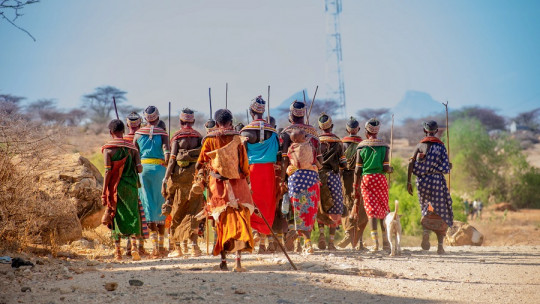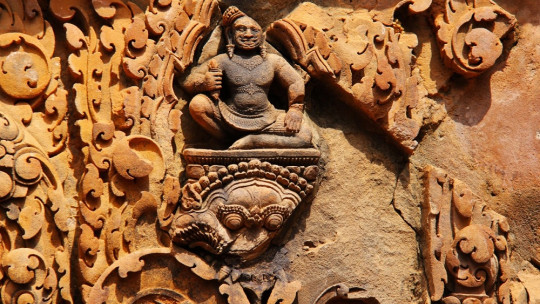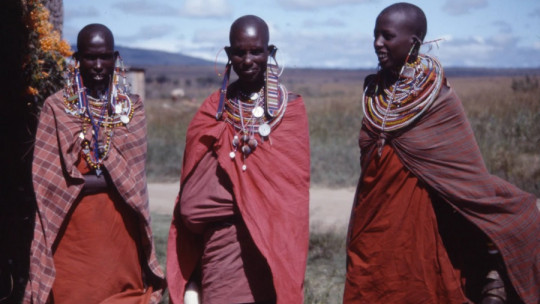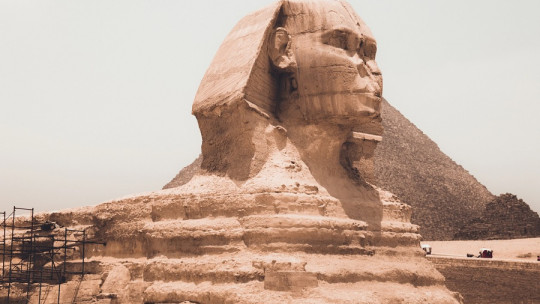Anthropology, like almost all scientific disciplines, does not have a single predominant school, but rather a set of several of them.
In order to get to know them better we are going to do a tour of the schools of anthropology more representative in order to discover what approaches they make and be able to compare them between them, so we can distinguish the common points they raise as well as the differences that are specific to each one.
The 5 main anthropological schools
These have been the main currents of this science throughout its historical development.
1. The first of the anthropological schools: evolutionism
Anthropology is the science in charge of studying the human being in all its dimensions, especially the cultural one. Within this task, different approaches have historically emerged, which are those that represent the main anthropological schools, each of them offering a way of carrying out studies on human beings and their different cultures.
It must be taken into account that this is a relatively recent discipline, since It has been considered an independent science since the last decades of the 19th century, driven by Charles Darwin’s ideas about the natural selection of species since these principles were extrapolated to human societies through the so-called social Darwinism, which also affirms that only the fittest groups are the ones that survive.
This was precisely how what we could consider one of the first anthropological schools emerged, which is evolutionism. The maximum representative of this school is Herbert Spencer, one of the first anthropologists in history. Spencer was one of the great English intellectuals of the 19th century. He embraced the theory of evolution to try to explain the functioning of human communities.
However, despite using Darwin’s theories, he also intertwined them with those of Jean-Baptiste Lamarck, that is, with Lamarckism, which defended postulates about evolution contrary to those of Charles Darwin. In any case, evolutionism is one of the anthropological schools characterized by rejecting creationism and trying to offer a scientific explanation for the origin and modification of human societies and cultures.
Another of the greatest exponents of this anthropological school was Edward Burnett Tylor , British anthropologist who laid the foundations of this discipline. Tylor developed cultural anthropology and comparative methods, being the first to carry out field studies, that is, on the ground, in a quantitative way to be able to draw conclusions at an ethnological level.
Lewis Henry Morgan was another of the evolutionary authors and therefore representative of the first of the anthropological schools. In this case, Morgan focused his efforts on analyzing kinship systems. He developed a scale to classify the degree of social evolution of human cultures, which ranged from savages, with three different degrees, to barbarians, with three other levels, until finally reaching modern civilizations as we know them.
2. The American school of anthropology
Another of the main anthropological schools is the so-called American school, which emerged after the independence of the United States with the aim of analyzing the behavior of human groups on this continent. The greatest exponent of this current would be Franz Boas, an American author and one of the greatest opponents of the time to the nascent ideas of scientific racism
Within anthropological schools, the American one is characterized by the in-depth study of culture and its comparison between different human groups to evaluate contact and transmission. For these authors, the key was to look for both similarities and differences, since only then would one be in a position to carry out a rigorous analysis of cultural areas as well as their expansion and confluence with others.
An important question raised by the American school is the question of whether there are other species that, like humans, have culture. This branch is known as biological anthropology. To do this, what they do is establish a concrete definition of what culture is so that from there they can investigate whether other animals, such as perhaps the great apes (orangutans, gorillas, chimpanzees) also develop behaviors that could fall within the called culture.
Americans also studied language use in depth through linguistic anthropology It is such an important part of the culture that it becomes its own element. The form and use of language is of vital importance for anthropologists as a means of knowing the cultural history of a certain people. They can even study the way they think thanks to the language structures they use.
Likewise, thanks to this anthropological school, greater importance began to be given to archaeological studies as one of the most important methods for anthropologists as a means of extracting information about the changes that a certain culture has been experiencing over the centuries. years.
3. Diffusionist anthropological school
The third of the main anthropological schools is diffusionism, an anthropological current based on the principle of cultural diffusion What does this mean? That all cultures transmit their traits to those close to them, so diffusion is constantly being experienced among all of them. In this way, the use of a certain technique or a specific object, even if it coincides between several cultures, must come from one of them or from an older one that no longer exists but was in contact.
In fact, there is an offshoot of diffusionism known as hyperdiffusionism, which takes this theory to its extreme. Its defenders maintained that there had to be a single primitive culture from which the others emerged, through small changes that cumulatively gave rise to the entire range of very different cultures that we can observe in the world today.
Friedrich Ratzel was one of the main defenders of diffusionism In fact, he is the father of anthropogeography or human geography, the study of the movements of human societies through different regions. Ratzel wanted, through diffusionism, to put an end to the evolutionary ideas of anthropology, since evolutionism defended the simultaneous development between cultures while diffusionism advocated constant exchange between them.
The fact of the diffusion of a specific element from one culture to another is known in anthropology as cultural borrowing. It is a fact that has happened continuously in human cultures, although obviously some have been more open than others to this happening, facilitating contact with certain cultures more to the detriment of others at different times in history.
4. The French sociological school
Within the anthropological schools, we also find the so-called French sociological school. This current It is mainly represented by Émile Durkheim, founder of sociology as an academic science The basis of this school is that a social phenomenon cannot be studied in isolation, but rather it must be analyzed in perspective, taking into account all the elements related to it.
Therefore, what the French sociological school defends is the interconnection between cultural elements, which must be studied together if we want to draw well-founded conclusions, since otherwise we would lack sufficient information to be able to issue a properly founded diagnosis.
Another of the most important authors of this anthropological school is Marcel Mauss , whom many consider the father of French ethnology. Like Durkheim, Mauss affirms that, as happens in the rest of the sciences, anthropological concepts cannot be studied in isolation, since they need a context that helps the researcher find the precise causes that underlie each one. from them.
Therefore, these authors reject comparison as an anthropological method through which to analyze different human cultures. For them, each one must be studied using the rest of the elements as context.
5. Functionalist anthropological school
Finally we find functionalism to close the list of the most important anthropological schools. The most important functionalist authors are Bronislaw Malinowski and Alfred Reginald Radcliffe-Brown.
This movement defends the importance of each part of culture for the function it plays for society , finally building a universality in which each element has an importance. It is a response to the postulates of diffusionism that we saw previously.
Functionalism brings the concept of social structure as a key element, since every function must be preceded by a structure that supports it. Therefore, it must be one of the elements that functionalism, one of the main anthropological schools, defends as a principle when carrying out the corresponding studies.









